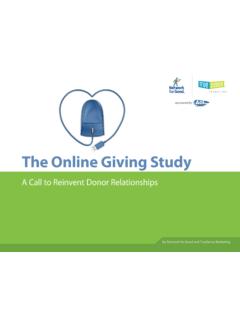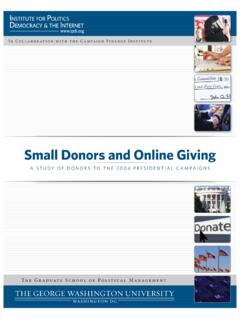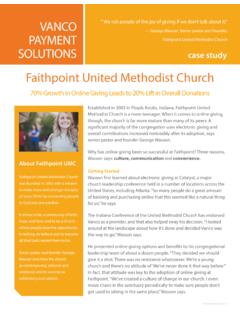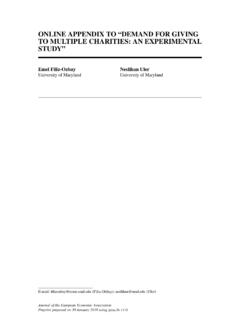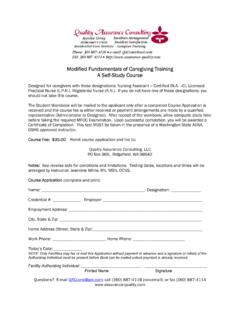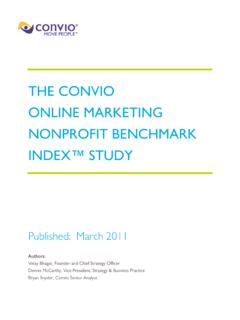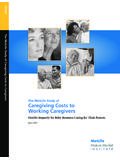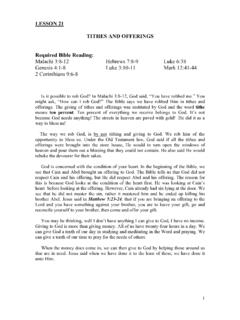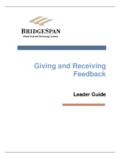Transcription of Impulse on the Internet: How Crisis Compels Donors to Give ...
1 Contact 202-577-1932 1 Impulse on the internet : How Crisis Compels Donors to Give online A Network for Good study of Disaster giving EXECUTIVE SUMMARY Introduction online giving is growing exponentially per year, from just over half a billion in 2000 to more than $ billion in 2005, though it still represents a relatively small percentage of total charitable giving . The notable exception is giving in response to humanitarian crises, when the internet is becoming Donors avenue of choice. The Chronicle of Philanthropy has noted that internet donations for tsunami relief accounted for more than one-third of the total raised more than twice the proportion of online gifts in the aftermath of the September 11, 2001, terrorist attacks. After Hurricane Katrina, half of relief giving was online representing the largest outpouring of donations online in history.
2 Network for Good has undertaken a study of the recent, large-scale humanitarian emergencies that promoted massive online donations to analyze: Why Donors give online How Donors give online : their giving behaviors Implications for nonprofits seeking to fundraise online This Executive Summary describes the overall findings. A full copy of the study will be available in late August. Methodology This study is based on analysis of $ million in charitable giving online through Network for Good in response to three major crises: the December 2004 tsunamis, Hurricane Katrina in August 2005 and the Pakistan earthquake of October 2005. Tsunami relief: 82,000 donations totaling $11 million for 124 charities Katrina relief: 107,000 donations totaling $13 million for 344 charities Pakistan relief: 3,100 donations totaling $500,000 for 75 charities As the internet s largest nonprofit giving portal, Network for Good has a uniquely rich set of data on online giving .
3 Since its inception in November 2001, Network for Good has processed nearly $100 million in donations for over 23,000 different charities, including the $ million that is the focus of this study . Through , online Donors can support more than one million different charities in the GuideStar database. In addition, Network for Good processes donations for about 6,000 nonprofits via their own web sites. PDF created with pdfFactory Pro trial version Contact 202-577-1932 2 Findings Disaster giving is Impulse giving . People are shocked by the disturbing words and pictures that emerge from humanitarian disasters, and they want to help in that moment. By enabling people to react immediately -- when they feel moved by the unfolding story -- online giving likely increases the rates at which feeling is converted to charitable action.
4 This is especially true when giving links are integrated into online news content, as Network for Good has seen through its partners AOL and Yahoo! The Impulse effect was strong in all three crises: Tsunami: web traffic 10 times normal volume, donations 6 times normal volume Katrina: web traffic 75 times normal volume, donations 20 times normal volume Earthquake: web traffic double normal volume, donations double normal volume In addition, Network for Good saw a five-fold increase from normal conversion rates on search marketing during Hurricane Katrina. Hurricane Katrina s spike is typical of disaster giving via Network for Good: Daily Hurricane Donations$0$500,000$1,000,000$1,500,000$ 2,000,000$2,500,000$3,000,000$3,500,0008 /29/20058/31/20059/2/20059/4/20059/6/200 59/8/20059/10/20059/12/20059/14/20059/16 /20059/18/20059/20/20059/22/20059/24/200 59/26/2005 Finding #2: Disaster giving online follows a fast but fleeting pattern.
5 The Impulse effect spikes and drops within a short, 2- to 6-day timeframe. Finding #1: The internet is ideally matched to charitable giving at times of disaster, when technology can turn the Impulse to help into a donation within seconds. This Impulse effect is evinced in increased traffic, donations and conversion rates. PDF created with pdfFactory Pro trial version Contact 202-577-1932 3 Not surprisingly, people engaged with online coverage of crises lead in donations. The primary source of Network for Good s donations is consistently how to help links within AOL and Yahoo!, as well as on sites such as CNN and USA Today. The influence of the news media both online and offline is sometimes evident in giving patterns. For example, following coverage of pets left behind during Hurricane Katrina, giving to animal welfare organizations like the Humane Society, Noah s Wish and PETSMART Charities spiked, accounting for about $1 million in donations.
6 The average online gift across all crises was approximately $125. That is very close to Network for Good s average gift size of $137 for 2005 and far more than the average offline gift to charity, which was $27. Most giving was focused on well-known organizations, but when presented with choices, a significant number of Donors opted to support smaller or lesser known organizations (tsunami a total of 124 charities; Katrina, 344; and earthquake, 75). For example, during Hurricane Katrina relief efforts, Network for Good s page featured dozens of charities. About 60% of donations were to the American Red Cross and 40% to other organizations, compared to 80% of donations going to the American Red Cross overall in response to the Crisis . When more options were presented to Donors , they did value choice.
7 Top three tsunami charities: American National Red Cross, United States Fund for UNICEF and AmeriCares Foundation, Inc. Top three Katrina charities: American Red Cross, Salvation Army and Catholic Charities USA Top three earthquake charities: Humanity First USA, United States Fund for UNICEF and Save the Children While fundraising was once the domain of nonprofits and their corporate partners, with each Crisis , Network for Good has seen an increasing number of people creating links to their favorite charities to fundraise on their behalf. Hundreds of blogs, individual web sites and small business web sites and a few celebrities - have linked to Network for Good at times of Crisis . Dozens of individuals set up their own web sites in the wake of Katrina to match people willing to provide housing with victims.
8 The result was a thriving, if somewhat fragmented, network of people mobilizing resources. Finding #3: News coverage is a major driver of giving online . Half of Network for Good s traffic in Crisis is driven by links with AOL and Yahoo!, with links within their news content generating the most donations. Finding #4: Whether due to the impulsive nature of online giving or the credit card effect, online Donors are more generous than offline Donors . Finding #5: Big brands win but Donors value choice. Finding #6: The internet has created a new type of donor: the citizen philanthropist. PDF created with pdfFactory Pro trial version Contact 202-577-1932 4 Privacy and security was consistently the #1 clicked on FAQ throughout Network for Good s site during Crisis , an indication that fraud is a chief concern of Donors .
9 In response to such concerns, organizations like the American Red Cross issued lists of official donation processing vendors, including Network for Good. Network for Good s overall giving for 2005 apart from Crisis giving showed an increase over the previous year, suggesting that donations to non- Crisis charities did not dip out of a sense of compassion fatigue. In fact, 2005 s holiday giving was the highest on record despite a three- Crisis year, with $ million donated to more than 7,800 charities in December alone. Network for Good encouraged recurring gifts in the donation check-out process, yielding several thousand new monthly givers. Automatic monthly gifts now account for more than $100,000 of donations per month via Network for Good. Implications for Nonprofits The study suggests several lessons for nonprofits: Charities need to set up online donation processing before a Crisis , because the window of opportunity is so narrow it leaves little time to do so once disaster has struck.
10 Charities should consider offering recurring giving as an option in the donation check-out and emphasize it with Donors . Impulsive givers are in a hurry; they want to help quickly, so text-heavy appeals and dense web sites are not advisable. Leave the details to thank you notes, when nonprofits can expound on the impact of donor gifts. If a charity is not a big brand or relatively small, it should be sure to seek listings on sites such as Network for Good since Donors value choice yet may not know how to find lesser known relief agencies. About Network for Good Network for Good ( ) is the internet s leading charitable resource, an easy-to-use, secure website that includes detailed listings of more than one million charities through GuideStar and a searchable VolunteerMatch database of more than 38,000 volunteer opportunities.

